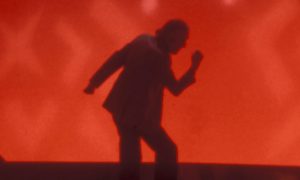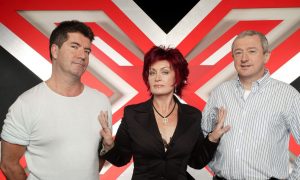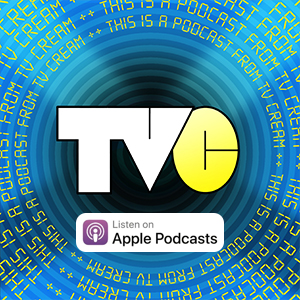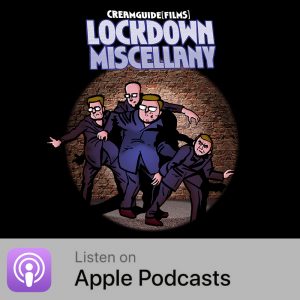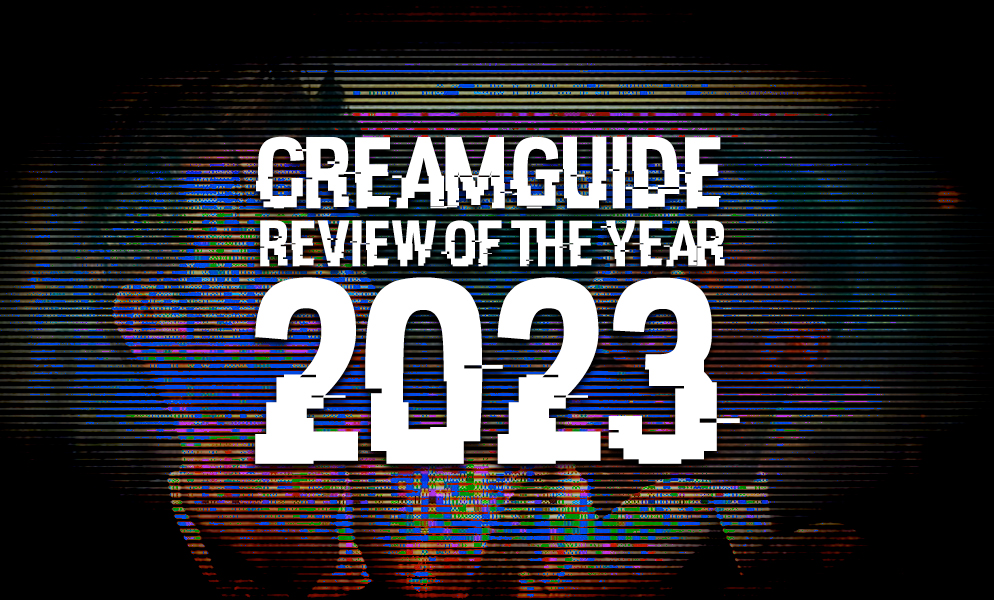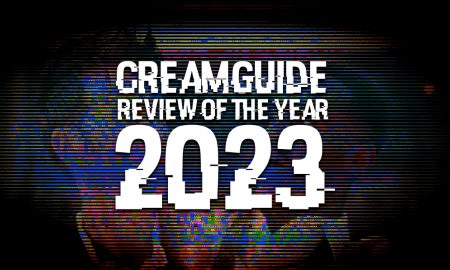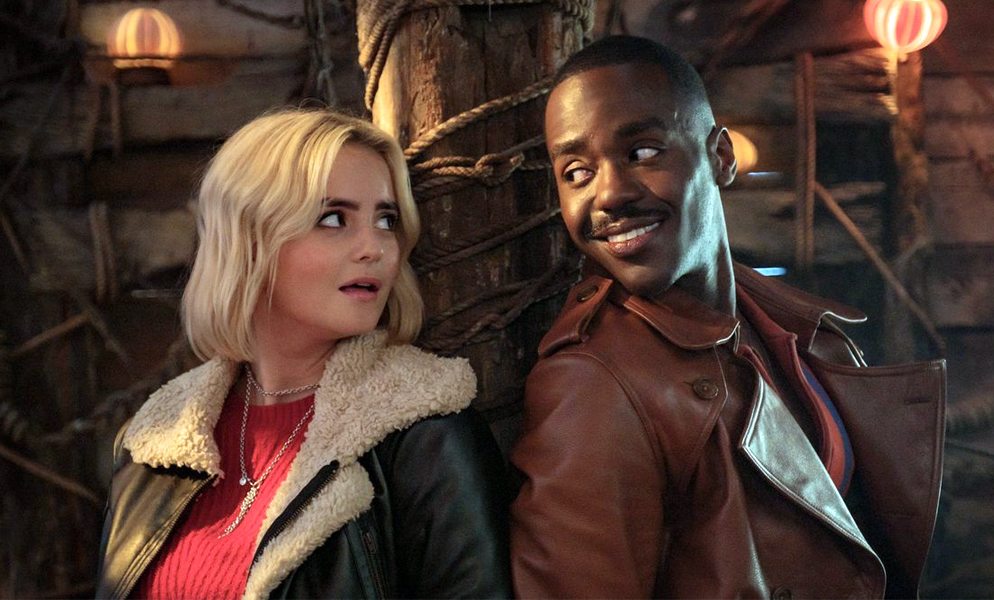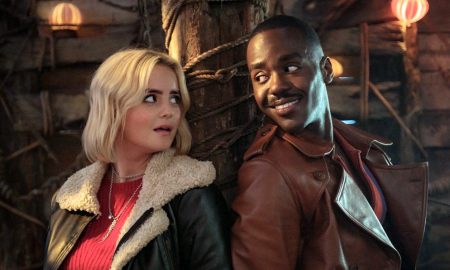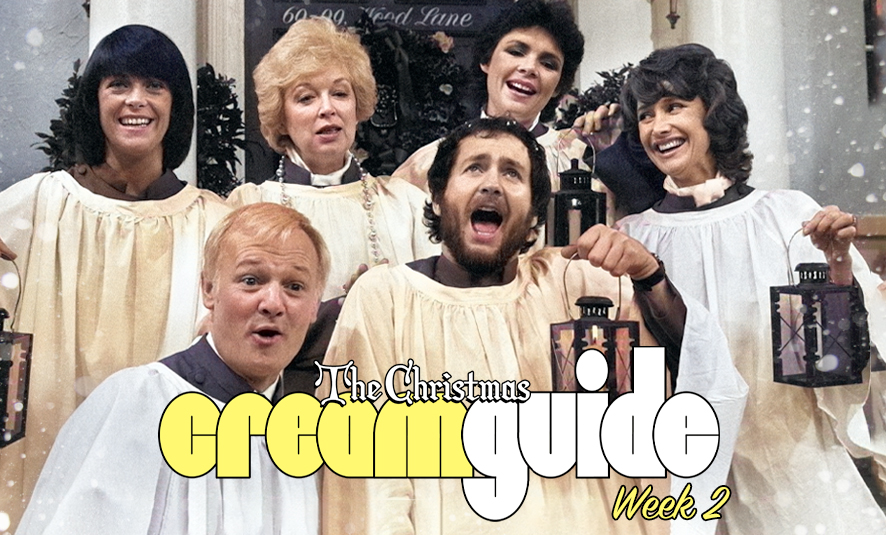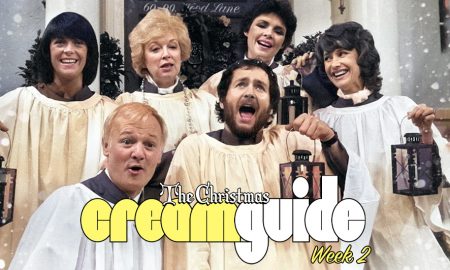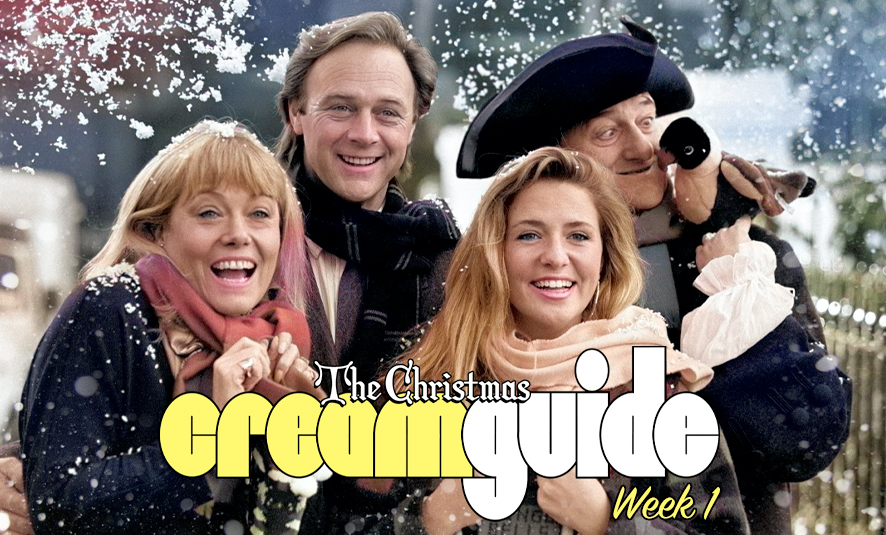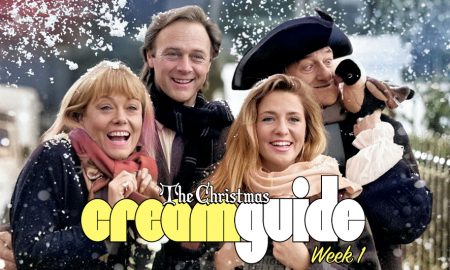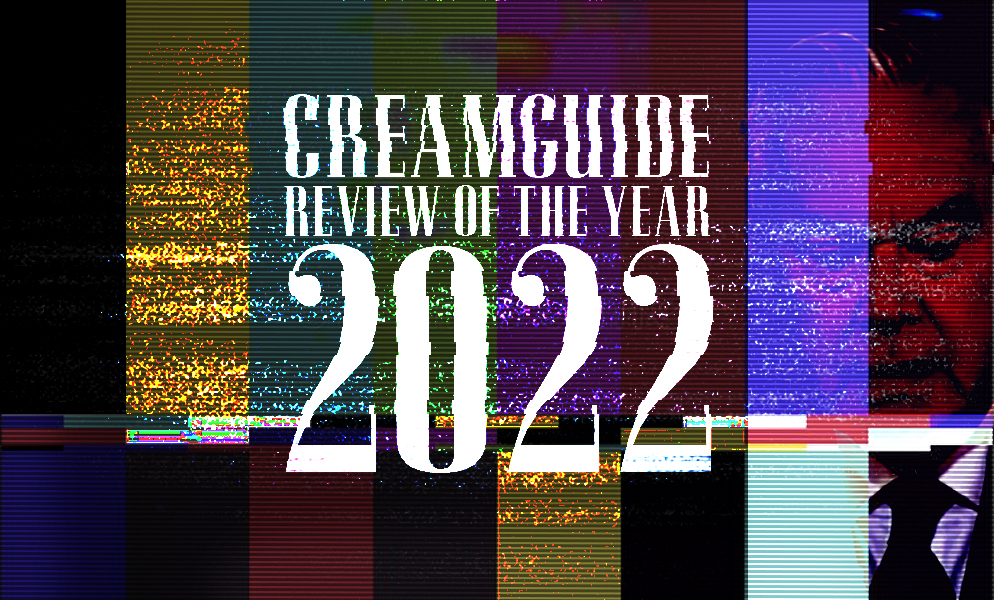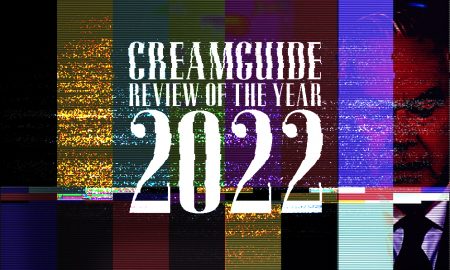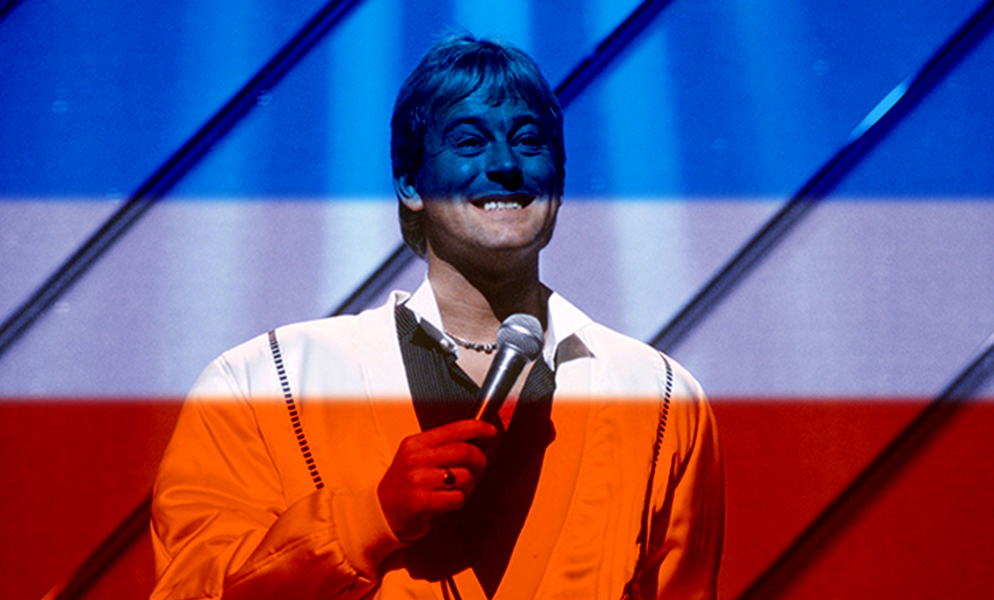
Also:
- It's Saturday Night
- 2. An autograph before you go
- 3. A new kind of game show
- 4. A rising exasperation with the quantity of dirt
- 5. The whole thing suddenly fell apart
- 6. Synthetic propensity
- 7. It was destined to be an anti-climax
- 8. This is your show now
- 9. The awesome scale of our wastefulness
- 10. Hands up those who couldn't care less
- 11. Together We’ll Be Ok
- 12. Decide the shape of ITV in the 1980s
- 13. Alan is too commercial
- 14. It worked like a dream
- 15. Older men, doing school boy tricks
- 16. Killing the Golden Goose
- 17. People love us to be sexy
- 18. The manure is worth more than the cattle
- 19. They were big in the States and we noted that
- 20. I’m still aggressive and I’m still handing out the insults
- 21. A new style of lunatic humour
- 22. The Habitat-bean-bag-hessian-wallpaper brigade
- 23. Thoroughly sinful
- 24. All carrots should be scraped, sliced and cooked
- 25. Back then it was radical stuff
- 26. Whatever they do, we can do it better
- 27. You'll have to take us as you find us
- 28. Entertainment that keeps on the move
- 29. It's the public that has to pay
- 30. The last we saw of either of them was their sad faces
- 31. Just shoot the bastard
- 32. Britain could clearly be facing its darkest hour
- 33. Any enthusiasm we may have had for continuing discussions is waning
- 34. It was considered by LWT and then put in a bottom drawer
- 35. Watch the redoubtable Terry take off
- 36. I thought it might be terrible and I wouldn’t enjoy it at all
- 37. Kamikaze Mastermind
- 38. We haven’t moved into luxury
- 39. We are investing in people
- 40. Delivered impeccably
- 41. He has to allow you to do your bit
- 42. All the anticipation of the great emotive point
- 43. If you want Russ Abbot to do it, then you have to accept me and my ideas
- 44. Let’s get straight into this
- 45. Unedifying Greed
- 46. We’ve got the fucking lot!
- 47. Scope for humour and danger
- 48. Pure Megablast
- 49. There’s lots of killing, but not much else
- 50. I wanted to make sure it was going to be disastrous
- 51. Oh dear – Auntie’s playing bingo!
- 52. A Shrivelled Little Thing
- 53. I shouldn’t have accepted it
- 54. We would be the spoilsports
- 55. The Most Sexless Person In Television
- 56. They’d have strung me up if I hadn’t chosen him
- 57. Is there some way to play with the internal constituent parts?
- 58. The most important entertainment programme of my time
- 59. The plumply pretty female duo
- 60. The audience just sort of started to freeze on him
- 61. More pilots than British Airways
- 62. There's going to come a time when you'll have to go to the BBC
- 63. A slightly pretentious manifesto
- 64. Things Look Very Precarious
- 65. It’s no good doing all the same old people all the time
- 66. That’s just not funny Bobby, it's corny - just don’t do that
- 67. Well bottom’s not funny
- 68. We Are The Funnymen
- 69. The powers that be listened to Denis
- 70. Stretchers never go up stairs
- 71. I was in obscurity until this series
- 72. I don’t care if he doesn’t like me
- 73. There’s such a passion for nostalgia right now
- 74. I Heard A Seat In The Stalls Go ‘Gerdonk!'
- 75. This is your show, folks, and I do mean you
- 76. There’s good news for perplexed fans of 3-2-1!
- 77. Taking on Blind Date would be a real challenge
- 78. You wanna bet on it?
- 79. The yarns worked their tried and tested magic
- 80. The Charge-And-Shout Brigade
- 81. I sat for a moment in silence, then turned in my chair and left the stage
- 82. We just weren't allowed into UK terrestrial television
- 83. Beadle’s A Prick
- 84. The interviewer always has to know when it's best to keep his or her mouth shut
- 85. Can you come up with a good solution for the Murder Weekend mystery?
- 86. He's not a goody- goody hero
- 87. The Sexism, The Dolly Birds, The Catchphrases
- 88. The feel of Saturday night
- 89. 1990 Who would employ an ex-alky with lowered self-esteem
- 90. It were a right smack in the face
- 91. Look Straight Into My Eyes And Everything Will Be Alright, That's A Promise
- 92. That's the last thing I was expecting, Jim
- 93. The characters and situations are real
- 94. Oh Man, There Go All My Women Fans
- 95. A Double Order of Talent
- 96. If there is an air of spontaneity about it, it’ll be genuine
- 97. NTV brings you ... empty rooms!
- 98. You’re BBC, you shouldn’t be here
- 99. If this doesn’t work out, we’re both snookered!
- 100. The humour of Beadle comes through humiliating people!
- 101. To allow such bilge on TV is an insult to the audience
- 102. Like a cup of cold sick
- 103. A litre of gin, ecstasy and crack cocaine
- 104. A reliable tent pole for Saturday evenings
- 105. It is in the cutlery drawer
- 106. Welcome to the new Saturday night
- 107. Congratulations, you have got the fucking Gen Game
- 108. The programme has done extremely badly and will be dropped after this series
- 109. Building the excitement and tension to a crescendo
- 110. He gives us our spirit of unity; we’d all like to strangle him
- 111. The worst programme currently on terrestrial television
- 112. I award the city state of Milton Keynes 100 credits!
- 113. There’s nothing that makes people scream, ‘Did you see that?’
- 114. It was of a standard frankly well below what the public would want
- 115. Waxing An Ape Is My Ambition
- 116. Don’t Get Mad, Get Even
- 117. The penalty shoot-out is the greatest ever endgame
- 118. 200 black boxes are strapped to the back of a cross-section of the nation
- 119. Better For You, Better For All Of Us
- 120. I mean who on earth thought that was a good idea?
- 121. I’m sure the tune was in there somewhere
- 122. This Time, You Decide
- 123. King of trash, that’s me
- 124. It’s about rejection now
- 125. They lost what Popstars was all about
- 126. Win the ads
- 127. A name in search of a series
- 128. Getting grief from the papers
- 129. I’m so pleased to be back on television
- 130. Saturday nights haven't been this interesting for 10 years
- 131. It’s the Usual Nonsense
- 132. The trip of a lifetime
- Epilogue: Why Haven't You Written a Series of Articles on Tuesday Night Telly?
|
“It’s wallpaper TV,” claimed Daily Mail entertainment columnist, Baz Bamigboye in 2000. “But watching Cilla is like using an illegal substance. You know you shouldn’t but you like it.” “Strong format, fantastic engagement with the audience, broad age range, consummate professional presenting it,” says Noel Edmonds. “If you’re asking for a professional’s view, that would – for me – be the best Saturday night format.”
Blind Date owes its initial success – in part – to the demise of a similarly successful and ground-breaking series. It was John Birt’s decision to move the ailing Game For a Laugh to Sunday nights that opened up a prime slot on Saturday evenings. Game For a Laugh’s allure was its originality and inventiveness, and as the creative forces behind the show ran out of ideas, Birt ensured its successor in the Saturday evening slot required little in terms of sustained creative input, and relied instead on great casting and a highly successful, but unchanging format.
It is said that Cilla Black first became aware of the television series Perfect Match while on a concert tour of Australia in 1984. Recognising the show had popular appeal she asked her bosses at LWT why there was not a British version. LWT’s then head of light entertainment, Alan Boyd, had in fact already bought the format. Cilla had failed to hear about it because Boyd – recognising that Game For a Laugh and Surprise Surprise were already occupying the Saturday and Sunday night schedules – had sat on it, waiting for a suitable gap to appear. Perfect Match actually began life in America in Studio 55, ABC Television Center on 20 December 1965 as The Dating Game.
The series was the brainchild of Chuck Barris, an eccentric, but highly influential figure in US television who would later go on to create long-running game shows, The Newlywed Game (which would find its way onto British screen as Mr and Mrs) and How’s Your Mother-In-Law. The Dating Game owed much to Barris’ step father (who lent Chuck $20,000 to produce the show) and the willingness of ABC to broadcast the series in the face of strong criticism against the show’s often unambiguous exchanges (on one occasion a female contestant asked one male contestant “What would I like most about you?” to which he promptly replied, “My cock”). Such was the strength of feeling directed at The Dating Game that on the day it first went on air, the Chicago Tribune ran a story entitled “Daytime Television Hits All-Time Low”.
The series was a major success. Presented by Jim Lange, The Dating Game was also noteworthy for providing early television exposure for future stars Teri Garr, Tom Selleck, Arnold Schwarzenegger and Farrah Fawcett. In 1973 The Dating Game went into syndication, and then left the airwaves altogether, until Barris engineered a comeback four years later. This time the series was raunchier than before and consequently lasted only three years amidst a barrage of complaints from viewers and press alike. In 1984, Barris sold the world rights to Fremantle Corporation.
In 1985 the BBC was locked into a fierce internal and external struggle to strike the right balance between popularity and quality. However, this dilemma was not unique to the public service corporation. Birt, sensing that The Dating Game was a winning formula, wanted to get a British version of the show on air, but was conscious that a mid-term review of LWT’s licence was being conducted by the IBA. “Alan (Boyd) and I worked closely to sanitise the programme for a British audience,” explains Birt. “In the event, David Glencross at the IBA was even more nervous than I had predicted. Alan and I brainstormed about the rules. In LWT’s version, we would be the spoilsports: the winning couple would travel to and from their date in the span of a single day; and they would go their separate ways and return to their respective homes by nightfall. They would be chaperoned at all times by a stills photographer. In their debrief for the following week’s programme, they would be encouraged to talk about personality, we would steer well clear of sex.”
Even with a revised format, Boyd and Birt realised the pivotal element needed to ensure their version of The Dating Game (to be called It’s A Hoot) would obtain the approval of David Glencross was the choice of presenter. Boyd’s instinct was to follow, what he describes as the “Larry Grayson route”, and approached comedian Duncan Norvelle.
At the time, Norvelle was known as the “Chase me” comedian (thanks to his famous catchphrase). He had appeared on the BBC’s Saturday night entertainment series The Main Attraction (1983-1984) and Central Television’s midweek variety show Mike Reid’s Mates and Music (1984). Seemingly just another of the burgeoning number of mainstream comedians that blossomed on British television during the early and mid-1980s, Norvelle’s camp persona ensured he achieved a level of exposure that exceeded his peers. His act was, in fact, inoffensive and his material non-sexual in nature. However, given the opportunity to host LWT’s new dating game show, the comedian inexplicably turned on the innuendo. “Duncan would rush out from behind the screen and say, ‘If you don’t like him, I do!’” recalls Boyd. “(Norvelle)’s unprovoked stream of gay innuendo not only put sex centre-stage, but also got in the way of the strong, central message of Blind Date– heterosexual attraction,” adds Birt. Norvelle struggled too with the show’s format. “We couldn’t edit him because he didn’t get the logic right,” says Boyd.
Next Monday: The Most Sexless Person In Television
Alan Boyd, Blind Date, Chuck Barris, Cilla Black, Duncan Norvelle, Frontpage!, It's Saturday Night, John Birt, LWT, Perfect Match, The Dating Game



